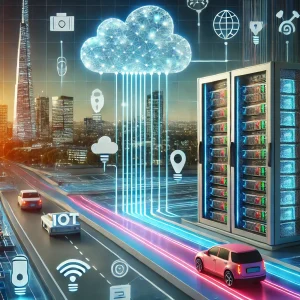What is Edge Computing and Why It’s Important

What is Edge Computing and Why It’s Important.
In today’s fast-paced digital landscape, where speed and efficiency reign supreme, edge computing has emerged as a game-changing technology. As businesses and consumers demand instantaneous data processing and reduced latency, edge computing is increasingly becoming a pivotal solution. But what exactly is edge computing, and why is it so crucial in the modern world? This article explores its definition, applications, and significance.
—
What is Edge Computing?
At its core, edge computing refers to a distributed computing paradigm that brings computation and data storage closer to the devices and users that generate and consume data. Unlike traditional cloud computing, which relies on centralized data centers located far away, edge computing processes data at or near the “edge” of the network.
This proximity allows for:
Faster data processing by reducing latency.
Lower bandwidth usage, as not all data needs to travel to the central cloud.
Enhanced reliability, even in areas with limited connectivity.
READ ALSO: 10 Essential Coding Languages to Learn for a Tech Career.
—
How Edge Computing Works
Edge computing operates through a network of edge devices, gateways, and servers. Here’s a simplified breakdown:
1. Data Generation: Devices like IoT sensors, smartphones, or autonomous cars produce data.
2. Edge Devices Process Data: Instead of sending all data to a centralized cloud, edge devices or local servers process critical information.
3. Selective Data Transmission: Only relevant data is transmitted to a central cloud or data center for long-term storage or advanced analytics.
—
Why is Edge Computing Important?
1. Reduced Latency
In applications like autonomous vehicles, medical devices, or online gaming, every millisecond counts. Edge computing eliminates the delay caused by transmitting data to distant servers, ensuring real-time responses.
2. Bandwidth Optimization
Streaming large volumes of data to a central cloud can strain bandwidth. By processing data locally, edge computing reduces network traffic, saving costs and improving efficiency.
3. Enhanced Security
Since edge computing processes data locally, sensitive information doesn’t always need to travel across networks, reducing exposure to potential cyber threats. Moreover, encryption and localized storage enhance data privacy.
4. Scalability
Edge computing allows businesses to scale their operations by deploying more edge devices rather than investing in expensive centralized infrastructure.
5. Reliability
In remote areas or during network outages, edge computing ensures uninterrupted service by processing data locally.
—
Key Applications of Edge Computing
1. Internet of Things (IoT)
IoT devices, from smart home appliances to industrial sensors, rely heavily on edge computing. For example:
Smart thermostats adjust room temperatures in real-time.
Industrial equipment monitors itself for predictive maintenance.
2. Autonomous Vehicles
Edge computing enables real-time decision-making in autonomous cars, such as avoiding obstacles or navigating traffic.
3. Healthcare
Edge computing powers wearable devices, enabling real-time monitoring of patients’ vitals. In emergencies, it ensures immediate data processing for timely interventions.
4. Retail
Smart shelves and checkout-free stores, such as Amazon Go, use edge computing for quick inventory tracking and payment processing.
5. Augmented and Virtual Reality (AR/VR)
Edge computing enhances AR/VR experiences by reducing latency, ensuring smoother interactions in gaming, education, or training simulations.
—
Challenges of Edge Computing
While edge computing offers numerous benefits, it is not without challenges:
1. Infrastructure Costs: Setting up and maintaining edge servers can be expensive.
2. Data Management Complexity: Handling vast amounts of decentralized data requires robust management systems.
3. Security Concerns: Although edge computing reduces data exposure, edge devices themselves can become vulnerable if not adequately protected.
—
Edge Computing vs. Cloud Computing
—
Future of Edge Computing
As 5G networks expand, edge computing will become even more integral to industries. With faster connectivity, edge devices can process larger data volumes with enhanced precision. Moreover, edge computing is expected to drive innovations in:
Smart cities, managing traffic, lighting, and utilities.
Advanced robotics, improving automation in manufacturing.
Personalized customer experiences in retail and entertainment.
—
Conclusion
Edge computing is revolutionizing how data is processed and utilized, bridging the gap between centralized cloud systems and end users. By offering reduced latency, improved security, and cost efficiency, edge computing is set to play a vital role in shaping the digital future. As industries and technologies evolve, adopting edge computing will be essential to remain competitive and meet modern demands.






